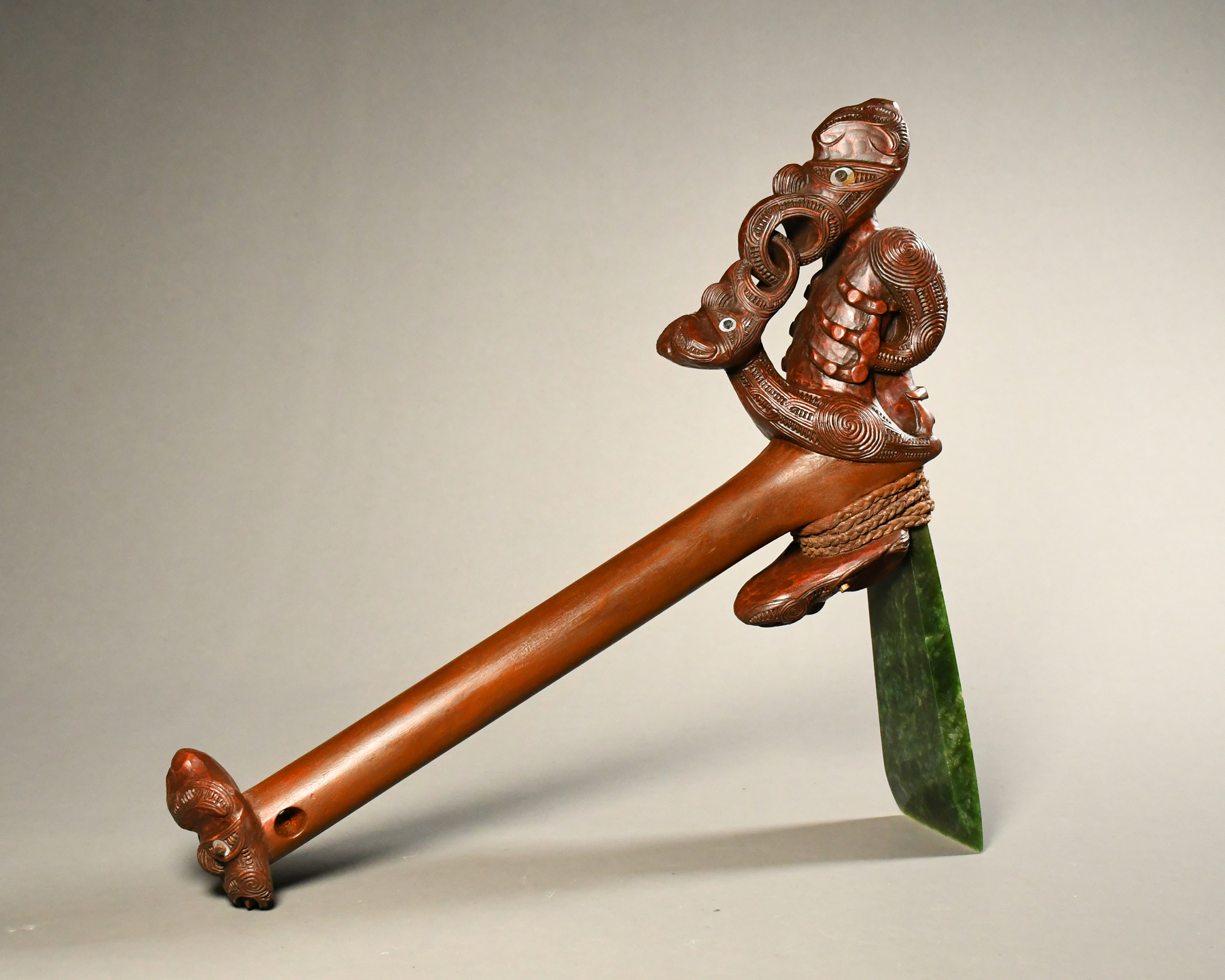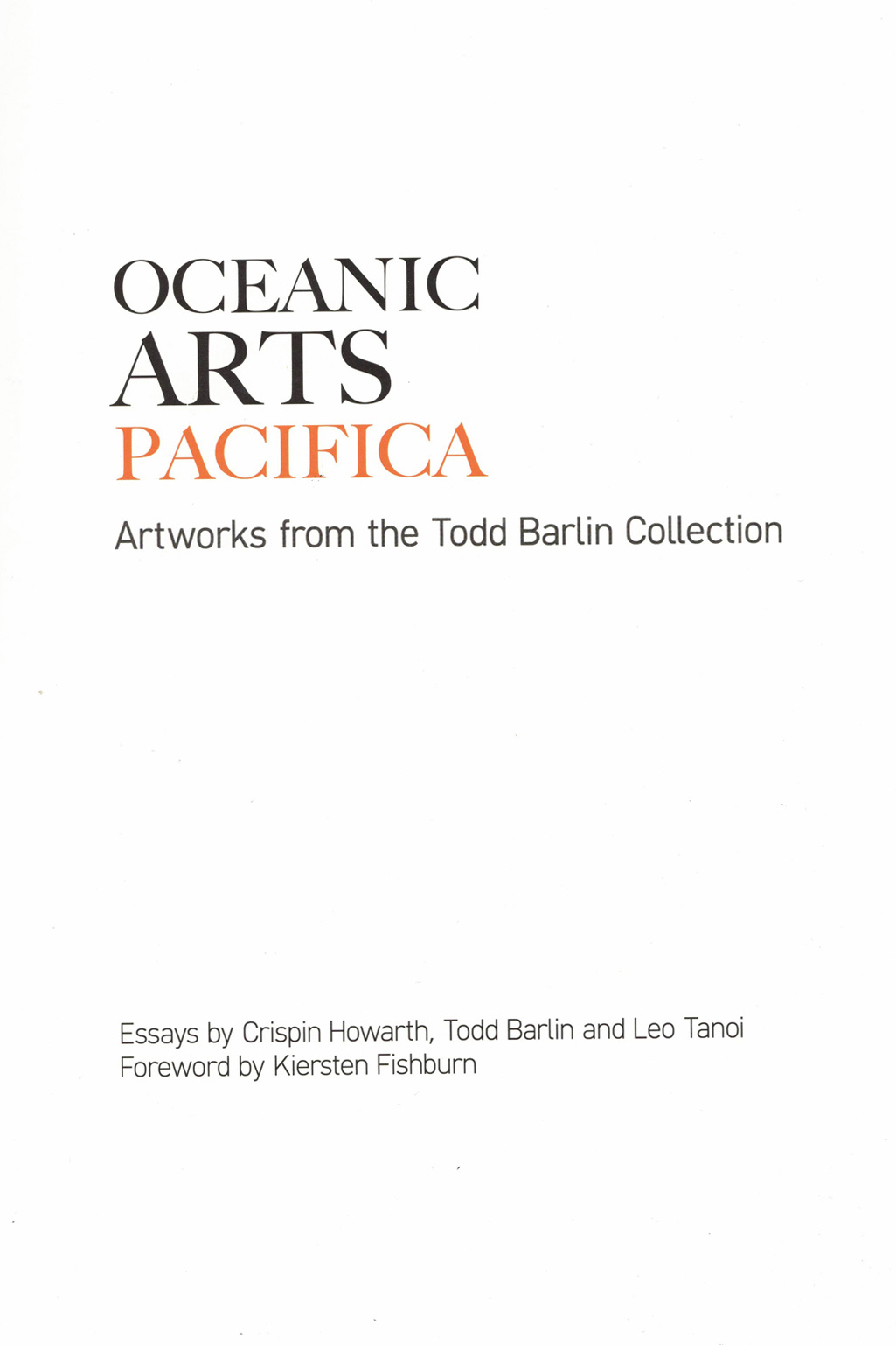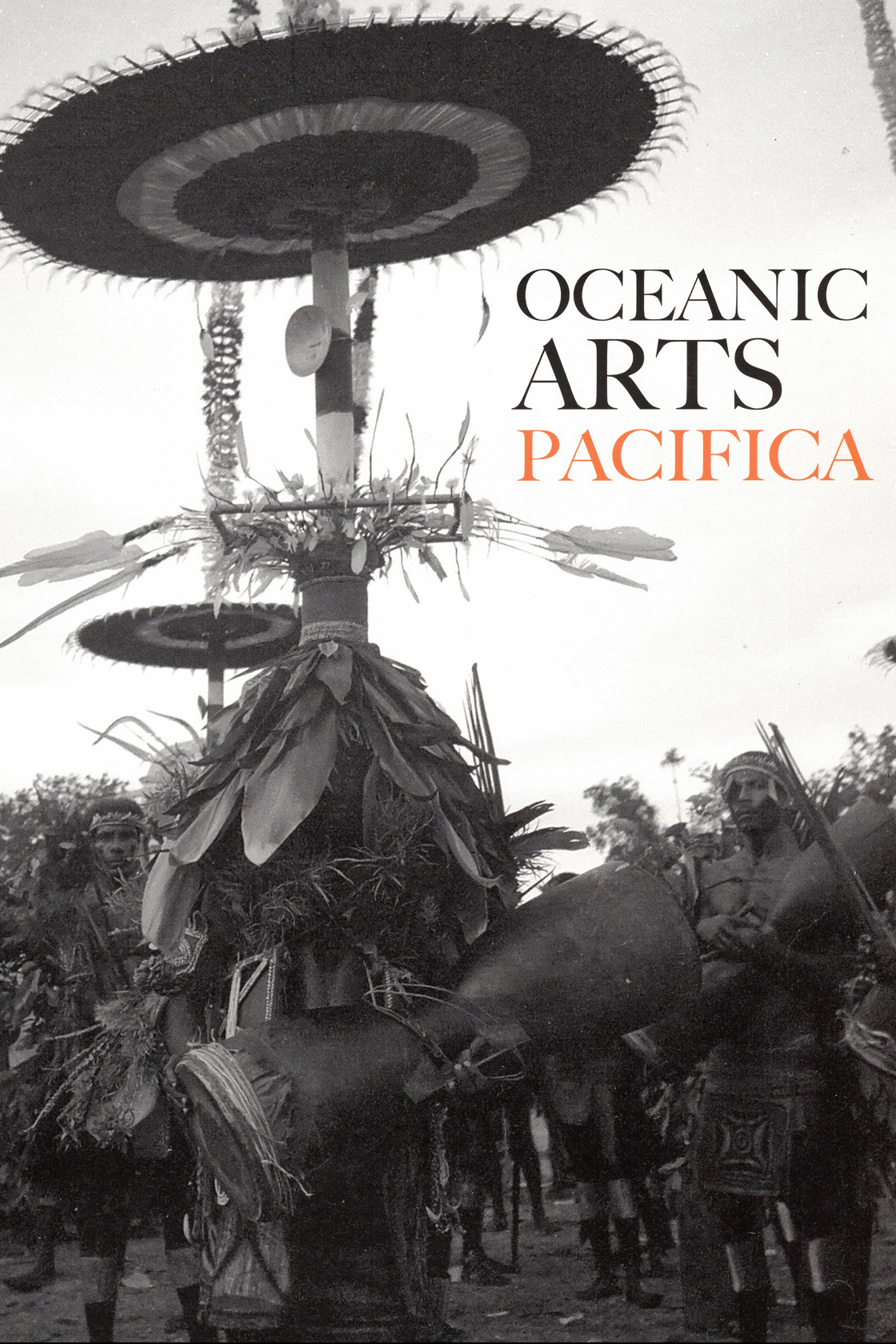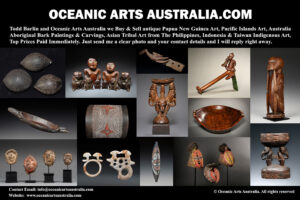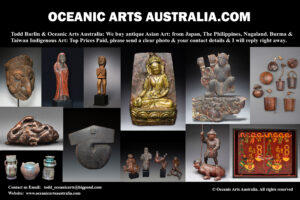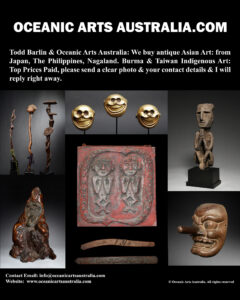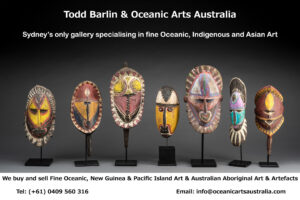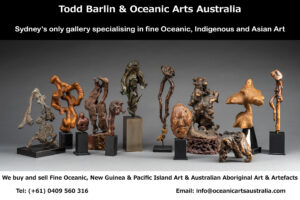A Superb Maori Ceremonial Adze by the Maori Master Carver John Collins New Zealand
| Collection No. | SOLD but see lots more Fine Oceanic & Aboriginal Art on my website |
|---|---|
| Size | 43cm x 32cm |
A Superb Maori Ceremonial Adze attributed to the Maori Master carver John Collins Circa 1990 New Zealand
A toki poutangata is a Ceremonial Adze worked from pounamu or greenstone that is usually lashed to a finely carved handle. Almost invariably carried by a person of mana, someone of high rank and with great leadership qualities, they were often adorned with the feathers of significant birds. Such birds included the kaka, kahu, and the kererū. Strips of dog hair were also added. Perhaps the nearest equivalent in European culture is the sceptre, used by kings as a symbol of rank and power and bearing the spiritual symbolism of the Christian cross.
Toki poutangata were used on ceremonial occasions, such as the felling of a great tree for a significant waka (canoe) or for the ridgepole of a whare nui or meeting house. The first chips cut from the tree were taken by the tohunga to a special place where karakia of thanksgiving were recited to the god of the forest, Tanemahuta in acknowledgement of the sacrifice of his offspring. The chips might also be returned ceremonially to the forest to nurture new growth.
It is believed that the toki poutangata was originally used for the ceremonial execution of captives. Upon the death of its owner, the special handle was buried with them while the pounamu blade remained with the tribe. Once it had been decided who would succeed the chief, another handle was fashioned and lashed to the adze.
H D Skinner recorded the work of Māori ethnologist Te Rangi Hiroa on the function of the toki poutangata. Te Rangi Hiroa maintained that this implement was never intended for the adzing of wood by craftsmen. “It formed an exclusive article in the property of a chiefly family, to be borne on ceremonial occasions, to accompany the gestures of the family orator, and to lie in state on the breast of the chiefly dead.” Buck told me that he knew of only one occasion on which a toki poutangata had been used actively, namely by Te Wherowhero when designating Te Atiawa captives to the oven after the fall of Pukerangiora pa. [an attack by Waikato on a Taranaki pa].
‘He suggested that the name of the artefact might be due to this specific function. He later withdrew this and suggested that the term toki poutangata meant “the adze that establishes man in authority”
With this in mind, the symbols of rank between Māori and European culture that held sway at the signing of the Treaty of Waitangi – the toki poutangata and the sceptre – are indeed strongly similar. Another mark of authority for the British were the seals of the realm.
References: Skinner, H D. (1974). Comparatively speaking: Studies in Pacific Material Culture
Provenance: The Todd Barlin Collection of Oceanic Art
See my new EXHIBITIONS GALLERY showing the Museums and Art Galleries Exhibitions that I provided artworks for over the past 40 years. There is the link to the article about my artworks published in the prestigious Louvre Magazine in 1996
I have artwork for Museums and art Galleries but also for collectors at every stage of their collecting. I want to encourage people to explore the fine art of New Guinea & West Papua and the Pacific Islands and to be able to see and touch the artworks in a relaxed and friendly manner in my Sydney Gallery. I would like to invite you to visit my gallery and see the artworks in person and also look at my website www.oceanicartsaustralia.com where there are many Galleries & Sub Galleries to explore.
My Gallery of nearly 40 years is the last physical gallery in Sydney that specializes in New Guinea and Oceanic Art. Sydney is very close to New Guinea & the Pacific Islands where all of these amazing artworks came from, Australia’s closest neighbors.
To see many more rare items and the finest masterpieces, please make an appointment with us to visit the gallery.
For all inquiries, please contact us

